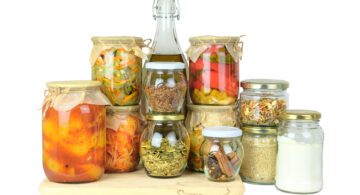Heal Your Gut, Heal Your Joints: A Functional Approach to Arthritis Relief
A New Approach to Arthritis Treatment
For many, arthritis feels like an inescapable condition, defined by daily pain and reliance on medications that merely mask symptoms. However, there is growing evidence that addressing gut health can significantly reduce arthritis symptoms, as the root cause of inflammation often lies in the digestive system.
Take June’s story as an example. Diagnosed with rheumatoid arthritis at age 68, she struggled with debilitating pain in her hands and knees. Tasks like opening a water bottle or brushing her hair were nearly impossible, despite her regimen of strong medications, including prednisone and methotrexate. Exhausted and unable to manage her condition, June sought help through a functional medicine approach.
During her first visit to the clinic, it became clear that her gut health was contributing to her arthritis. Tests revealed severe gut dysbiosis—an overgrowth of harmful bacteria and yeast that was driving inflammation throughout her body, including her joints. The key to improving her arthritis wasn’t just about reducing joint pain—it was about healing her gut.
The Gut-Arthritis Connection
Arthritis is commonly associated with aging or injury, but its roots often extend deeper. From a functional-medicine perspective, many forms of arthritis, including rheumatoid arthritis (RA) and osteoarthritis (OA), are driven by inflammation. This inflammation often originates in the gut, where imbalances in the microbiome (the community of bacteria, yeast, and other organisms in the digestive tract) can trigger an immune response.
Gut dysbiosis can occur due to various factors, including poor diet, antibiotic use, stress, and infections. When the balance of the microbiome is disrupted, the gut lining becomes damaged—a condition known as leaky gut. This allows bacteria and undigested food particles to escape into the bloodstream, where they prompt an inflammatory response.
In cases of arthritis, this systemic inflammation can also affect the joints, causing pain, swelling, and stiffness. Research has shown that bacteria from the gut can even find their way into the synovial fluid of the joints, further aggravating the condition. Healing the gut can therefore directly reduce joint pain and inflammation.
Treating Arthritis from the Inside Out – June’s Recovery
June’s gut-healing protocol began with herbal supplements to address her dysbiosis. Berberine, an antimicrobial herb, was used to reduce harmful bacteria, while probiotics helped restore beneficial bacteria. L-glutamine, an amino acid, supported the repair of her gut lining. In addition to these supplements, June followed an elimination diet to reduce inflammation.
This diet removed common triggers, such as dairy, gluten, soy, and nightshade vegetables like tomatoes and potatoes, which are known to exacerbate arthritis symptoms. Instead, she focused on eating anti-inflammatory foods such as leafy greens, olive oil, nuts, and fish rich in omega-3 fatty acids. Over time, her symptoms improved: she regained the ability to brush her hair and dress herself without help, her knee pain subsided, and her energy returned.
But gut healing requires more than dietary changes. Stress, another major contributor to inflammation, also needed to be addressed. June incorporated meditation and mindfulness practices into her daily routine, helping her manage the emotional toll of chronic pain. With patience and consistency, she was able to halve her prednisone dose and reduce her need for daily pain medication.
June’s experience shows how a gut-healing protocol can lead to significant improvements in arthritis symptoms, offering hope for those who feel trapped in a cycle of pain and medication.
The Healing Arthritis Protocol
Healing arthritis from the inside out requires a holistic approach, focusing on diet, gut repair, and long-term lifestyle changes. Here’s how a comprehensive functional medicine protocol can help.
Dietary Jump-Start Inflammation Reduction Through Food
The first step in healing the gut and managing arthritis is to overhaul your diet. An elimination diet can help identify food sensitivities that may be contributing to inflammation. During this phase, certain foods known to trigger inflammation are removed, including:
- Gluten
- Dairy
- Soy
- Corn
- Eggs
- Nightshade vegetables (e.g., tomatoes, potatoes, eggplant, peppers)
Instead focus on anti-inflammatory foods that promote healing such as:
- Leafy greens and colorful vegetables
- Healthy fats from olive oil, nuts, and seeds
- Omega-3 rich fish like salmon
- Whole, unprocessed foods
This two-week dietary protocol acts as a reset, giving the body a chance to calm the inflammatory response. Many people experience a significant reduction in symptoms during this phase, making it a powerful tool for starting the healing journey.
Intensive Gut Repair Restore and Rebalance
Once the dietary changes are in place, the next step is repairing the gut lining and rebalancing the microbiome. This phase may last several months and typically involves:
- Herbal antimicrobials: To reduce harmful bacteria, yeast, and parasites. Common herbs include berberine, oregano oil, and garlic.
- Digestive enzymes: These support proper digestion, including betaine for stomach acid and enzymes like amylase and lipase for breaking down fats, carbohydrates, and proteins.
- Nutritional support: L-glutamine, curcumin, and zinc carnosine help repair the gut lining, reducing leaky gut and inflammation.
- Probiotics: To restore healthy gut bacteria and maintain balance in the microbiome.
A healthy gut not only helps prevent joint pain but also supports overall health, reducing systemic inflammation and improving digestion and immune function.
Consistency for Long-Term Healing
True healing takes time and dedication. Once you’ve completed the initial stages of the protocol, the key to long-term success is consistency. This involves maintaining an anti-inflammatory diet and making lifestyle changes that support gut health. Stress management is also critical; incorporating practices like meditation, yoga, or deep-breathing exercises can prevent stress from disrupting the gut and triggering inflammation.
As part of this ongoing maintenance phase, you can reintroduce foods one by one to identify which ones trigger symptoms. Over time, you’ll develop a personalized food plan that supports your gut and keeps inflammation at bay.
In addition to dietary changes, continue taking supplements that support gut health and joint healing, such as collagen for joint support and probiotics for maintaining a healthy gut microbiome. Focus on overall wellness by addressing any lingering stress or trauma, as these factors can interfere with long-term healing.
A Holistic Path to Arthritis Relief
Healing arthritis requires more than pain management; it demands a deep dive into what’s driving inflammation in the body. By focusing on the gut through dietary changes, gut repair, and stress management, it’s possible to reduce arthritis symptoms and reclaim a better quality of life. While the healing process may take time, the rewards—less pain, more mobility, and improved vitality—are worth the effort.



















